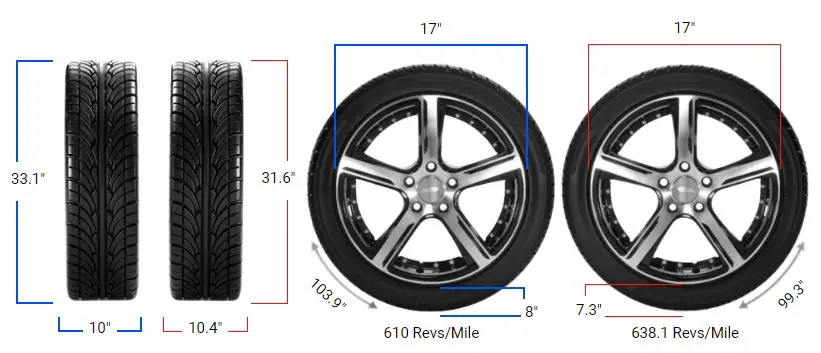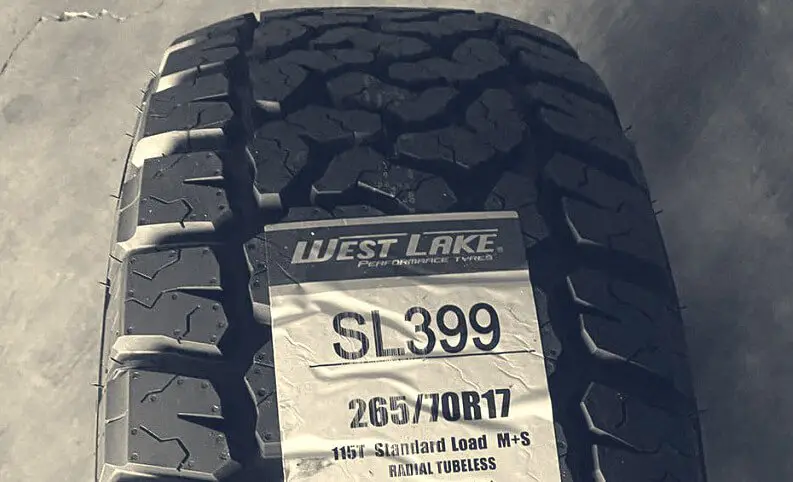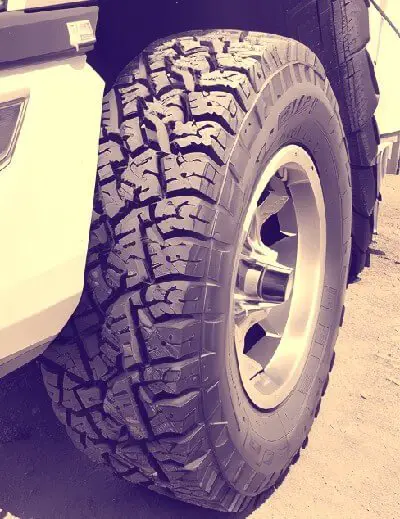Tire Size 255/80r17 vs 265/70r17

The main difference between 255/80r17 and 265/70r17 tires is the overall diameter. The 255/80r17 has a diameter of 33.06 inches, while the 265/70r17 is slightly smaller at 31.61 inches.
265/70r17 vs 255/80r17
This table of comparison will enable you to quickly understand the differences.

Fitment Guide
The new set should be within 3% of the original tire’s diameter when replacing tires to avoid clearance or drivetrain issues.
Going from a 255/80r17 to a 265/70r17 is a 4.4% decrease, beyond the recommended 3% limit. The smaller 265/70r17 may require modifications like a suspension lift to prevent rubbing at full turn.
Ground Clearance
With a diameter of 33.06 inches, the 255/80r17 provides 1.45 inches more ground clearance than the 31.61 inch 265/70r17.
This added clearance is useful for off-roading by preventing scrapes over obstacles. However, the larger diameter 255/80r17 causes a lower speedometer reading than the 265/70r17.
The smaller 265/70r17 reduces clearance, increasing risks of damage, but gives a higher speedometer reading.

Gas Mileage
The 265/70r17’s more minor contact patch and lower rotational mass improve fuel efficiency compared to the 255/80r17.
This makes the 265/70r17 better for daily driving and long trips. The larger 255/80r17 has more rolling resistance and rotational weight, hurting mileage.
Ride Comfort
The 255/80r17’s taller sidewall absorbs bumps better, providing a more comfortable ride on uneven terrain.
But the 265/70r17’s shorter sidewall enhances responsiveness on paved roads. Overall, the 255/80r17 suits off-road comfort, while the 265/70r17 favors on-road handling.
Aesthetics
Visually, the difference is subtle. The 255/80r17 has a slightly taller sidewall, giving a more aggressive, “stretched” look.
This suits trucks and SUVs well. The 265/70r17 appears more low-profile, which some prefer aesthetically on cars.

Handling & Stability
The 265/70r17’s shorter sidewall improves handling precision and response on the pavement.
The taller 255/80r17 sidewall flexes more, reducing responsiveness but aiding stability off-road. Overall, both offer responsive, stable handling.
Noise & Vibration
With its stiff sidewall, the 265/70r17 transmits more road noise and vibration into the cabin.
The 255/80r17’s additional sidewall flex dampens vibrations, providing a smoother, quieter ride. But the differences are minor, and both are relatively quiet and smooth.
Durability & Wear
The 265/70r17’s smaller contact patch could allow for more even treadwear and longer life.
The larger 255/80r17 puts more stress on components with its increased weight. However, the 255/80r17’s bigger air volume helps protect the rim from impacts.

Adverse Conditions
The narrower 265/70r17 in snow may cut through to the pavement more effectively.
The wider 255/80r17 provides better traction in mud or deep snow. Both perform well overall in wet and winter conditions.
Speedometer Reading
Due to its larger diameter, the 255/80r17 causes higher speedometer readings than the 265/70r17.
At an actual speed of 20 mph, the speedometer would read around 19.12 mph with the 265/70r17 but around 20 mph with the 255/80r17.
Our Observation
Based on our observation of 255/80r17 vs 265/70r17, the 265/70R17 is better suited for good gas mileage, responsive handling, and longevity on paved roads, making it ideal for daily drivers.
The 255/80R17 provides greater ground clearance and a smoother off-road ride, so it excels for off-road conditions.
For trucks and SUVs facing rough terrain, the 255/80R17 is recommended, while the 265/70R17 is best for cars driving mostly on pavement.
Overall, match the tire to the intended usage, as both have advantages in different scenarios. We marginally prefer the more versatile 255/80R17 for combined on and off-road use.

Meet Caitlin McCormack, a Tire Size Expert and Blogger Passionate About Everything Related to Tires. With Years of Experience in the Tire Industry, Caitlin Has Become an Expert in Tire Sizes and Their Impact on Vehicle Performance.
